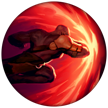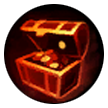  
Welcome to the ultimate guide to embracing the chaos of the jungle as  Briar. Here, you'll uncover the advanced strategies and controlled aggression that separate elite Restrained Hunger players from those who simply feed. This isn't just about clearing camps - it's about mastering your bloodlust, turning calculated risks into unstoppable snowballs, and leveraging Briar. Here, you'll uncover the advanced strategies and controlled aggression that separate elite Restrained Hunger players from those who simply feed. This isn't just about clearing camps - it's about mastering your bloodlust, turning calculated risks into unstoppable snowballs, and leveraging  Briar's unique self-taunt mechanics to outmaneuver every opponent. Briar's unique self-taunt mechanics to outmaneuver every opponent.
 Briar thrives on precision and controlled chaos. Your journey begins with mastering three core principles: First, understanding that your Briar thrives on precision and controlled chaos. Your journey begins with mastering three core principles: First, understanding that your  Blood Frenzy is both your greatest weapon and your biggest weakness - knowing when to unleash it and when to hold back. Second, recognizing that your ultimate Blood Frenzy is both your greatest weapon and your biggest weakness - knowing when to unleash it and when to hold back. Second, recognizing that your ultimate  Certain Death is a global playmaking tool that can instantly turn games. Third, perfecting your Certain Death is a global playmaking tool that can instantly turn games. Third, perfecting your  Chilling Scream usage to control engagements and mitigate the risks of your frenzy. Chilling Scream usage to control engagements and mitigate the risks of your frenzy.
This guide will transform you from a reckless berserker into a calculated predator. You'll learn how to track enemy junglers, optimize your pathing for maximum efficiency, and make game-winning macro decisions that capitalize on  Briar's explosive power spikes. Whether it's executing perfect dives, converting kills into map pressure, or commanding late-game teamfights, these are the techniques used by high-ranking Briar's explosive power spikes. Whether it's executing perfect dives, converting kills into map pressure, or commanding late-game teamfights, these are the techniques used by high-ranking  Briar mains to consistently climb. Briar mains to consistently climb.
Jungling as  Briar isn't just a role - it's a mindset of controlled chaos. By the end of this guide, you'll see the Rift not as a series of camps and objectives, but as a hunting ground where every move accelerates your path to victory. The hunger grows - let's feed it. Briar isn't just a role - it's a mindset of controlled chaos. By the end of this guide, you'll see the Rift not as a series of camps and objectives, but as a hunting ground where every move accelerates your path to victory. The hunger grows - let's feed it. | 
 |
The ward trick is an essential high-level technique that provides critical early information while establishing vision control. By placing a ward at the enemy  raptors around 0:50 and immediately recalling for raptors around 0:50 and immediately recalling for  Oracle Lens, you gain two key advantages. First, the ward reveals the enemy jungler's starting location and likely pathing, allowing you to predict their early movements and avoid unwanted encounters during your vulnerable early clear. Second, securing an early sweeper ensures your first gank attempts won't be spotted by defensive wards, increasing your success rate when you choose to engage. This tactic requires precise timing - the ward must be placed before 0:50 to allow safe recall without missing experience from your first camp. The information advantage lets you make informed decisions about counterjungling, scuttle crab control, or early gank opportunities while the Oracle Lens, you gain two key advantages. First, the ward reveals the enemy jungler's starting location and likely pathing, allowing you to predict their early movements and avoid unwanted encounters during your vulnerable early clear. Second, securing an early sweeper ensures your first gank attempts won't be spotted by defensive wards, increasing your success rate when you choose to engage. This tactic requires precise timing - the ward must be placed before 0:50 to allow safe recall without missing experience from your first camp. The information advantage lets you make informed decisions about counterjungling, scuttle crab control, or early gank opportunities while the  Oracle Lens denies vision on your approach routes. When executed properly, this technique provides significant strategic value without disrupting your clear tempo, perfectly complementing Oracle Lens denies vision on your approach routes. When executed properly, this technique provides significant strategic value without disrupting your clear tempo, perfectly complementing  Briar's all-in playstyle that values information and controlled aggression. Briar's all-in playstyle that values information and controlled aggression. |
|

|
|
One of the most effective tactics for  Briar is the aggressive level 3 invade, which starts with Briar is the aggressive level 3 invade, which starts with  Oracle Lens and a Oracle Lens and a  Health Potion. The goal is to clear your first three camps quickly, then immediately look to invade the enemy jungler. Thanks to your Health Potion. The goal is to clear your first three camps quickly, then immediately look to invade the enemy jungler. Thanks to your  Blood Frenzy, you have exceptional dueling potential at level 3 against most junglers. After clearing your first side, you immediately move to the enemy's opposite buff, leading to two possible outcomes: Blood Frenzy, you have exceptional dueling potential at level 3 against most junglers. After clearing your first side, you immediately move to the enemy's opposite buff, leading to two possible outcomes:
First, if the enemy jungler is still clearing their second buff, you can ambush them with  Head Rush, activate Head Rush, activate  Blood Frenzy, and win the 1v1 with your superior sustain and damage. Most of the time, this results in burning their Blood Frenzy, and win the 1v1 with your superior sustain and damage. Most of the time, this results in burning their  Flash, securing a kill, or at the very least disrupting their clear and putting them behind. Flash, securing a kill, or at the very least disrupting their clear and putting them behind.
Second, if the enemy jungler started on the opposite side of the map, you have multiple options:
Take their buff and adjacent camp, then look for a gank on nearby lane
Secure the buff and set up an ambush if you can win the 1v1
Continue your clear and counterjungle aggressively, punishing the enemy jungler by denying them camps
This strategy works consistently because it exploits  Briar's incredible early dueling potential while maximizing map pressure. By controlling vision with Briar's incredible early dueling potential while maximizing map pressure. By controlling vision with  Oracle Lens and making decisive invades, you can completely dismantle the enemy jungler's tempo and create early advantages for your team. Oracle Lens and making decisive invades, you can completely dismantle the enemy jungler's tempo and create early advantages for your team. | |

|

 |
This aggressive opener begins with  Oracle Lens to avoid detection as you sneak toward the enemy Oracle Lens to avoid detection as you sneak toward the enemy  raptor camp. By starting here unseen, you create two possible advantageous outcomes. If the enemy jungler began at their raptor camp. By starting here unseen, you create two possible advantageous outcomes. If the enemy jungler began at their  red buff, your efficient clear lets you contest their next camp - either surprising them with a red buff, your efficient clear lets you contest their next camp - either surprising them with a  Smite steal at Smite steal at  red buff, forcing an advantageous early fight with your red buff, forcing an advantageous early fight with your  Blood Frenzy, or at minimum disrupting their pathing by taking Blood Frenzy, or at minimum disrupting their pathing by taking  krugs. When executed cleanly, this can completely derail an opponent's early game tempo. The alternative scenario occurs when the enemy started the opposite side - this allows you to freely clear their entire redside jungle, establishing vertical jungle control and denying crucial early resources. Both outcomes provide significant benefits, from creating early pressure to securing a farm advantage that accelerates your scaling. The key to success lies in precise camp execution to maintain health, proper warding to track enemy movements, and smart decision-making about when to commit to invades versus retreating. This strategy works particularly well against junglers with slower early clears, allowing you to establish dominance before they can effectively respond. krugs. When executed cleanly, this can completely derail an opponent's early game tempo. The alternative scenario occurs when the enemy started the opposite side - this allows you to freely clear their entire redside jungle, establishing vertical jungle control and denying crucial early resources. Both outcomes provide significant benefits, from creating early pressure to securing a farm advantage that accelerates your scaling. The key to success lies in precise camp execution to maintain health, proper warding to track enemy movements, and smart decision-making about when to commit to invades versus retreating. This strategy works particularly well against junglers with slower early clears, allowing you to establish dominance before they can effectively respond. |
|

|
|
While  Briar can theoretically gank any lane, her kit truly shines when amplifying advantages for your winning lanes. The combination of Briar can theoretically gank any lane, her kit truly shines when amplifying advantages for your winning lanes. The combination of  Head Rush stun and Head Rush stun and  Blood Frenzy chase potential enables aggressive plays that most junglers couldn't attempt safely. When you identify your strongside (typically the lane with priority, CC, or early kills), you should focus on enabling them through calculated dives and relentless pressure. Blood Frenzy chase potential enables aggressive plays that most junglers couldn't attempt safely. When you identify your strongside (typically the lane with priority, CC, or early kills), you should focus on enabling them through calculated dives and relentless pressure.
Her  Chilling Scream allows for tower dives that would be reckless for other champions - use it to mitigate return damage while your laner finishes the kill, then use the knockback to reset aggro. The true power comes from converting these successful plays into structural damage, turning lane advantages into destroyed towers. Chilling Scream allows for tower dives that would be reckless for other champions - use it to mitigate return damage while your laner finishes the kill, then use the knockback to reset aggro. The true power comes from converting these successful plays into structural damage, turning lane advantages into destroyed towers.
Smart strongside play involves tracking the enemy jungler's position before committing. If they're cross-map, you can often take both the kill and the tower. If they're nearby, your  Blood Frenzy movement speed lets you quickly pivot between securing the gank and escaping counterganks. Remember: every successful strongside play accelerates your gold lead while demoralizing the enemy team. This snowball potential is why high-level Blood Frenzy movement speed lets you quickly pivot between securing the gank and escaping counterganks. Remember: every successful strongside play accelerates your gold lead while demoralizing the enemy team. This snowball potential is why high-level  Briar players will often camp a winning lane 3-4 times in succession, transforming a small lead into an unstoppable push. Briar players will often camp a winning lane 3-4 times in succession, transforming a small lead into an unstoppable push.
The key is balancing this pressure with maintaining your farm - don't neglect your camps entirely, but do prioritize plays that give your team permanent advantages through towers and Void Grubs takes. This aggressive yet calculated approach is what separates good  Briar players from dominant ones. Briar players from dominant ones. | |

|

 |
 Briar thrives on calculated aggression rather than reckless engagements. While her kit offers incredible all-in potential, her self-taunt mechanic requires precision in choosing when to commit. The key lies in recognizing truly advantageous situations where your Briar thrives on calculated aggression rather than reckless engagements. While her kit offers incredible all-in potential, her self-taunt mechanic requires precision in choosing when to commit. The key lies in recognizing truly advantageous situations where your  Blood Frenzy can turn fights, while avoiding forced plays that could result in feeding. Blood Frenzy can turn fights, while avoiding forced plays that could result in feeding.
Your  Chilling Scream cooldown is crucial for managing aggression - never engage without it available unless you have overwhelming advantage. The knockback and potential stun often make the difference between a successful dive and throwing your lead. Pay equal attention to enemy cooldowns; committing when crucial CC or escape spells are down dramatically increases your success rate. Chilling Scream cooldown is crucial for managing aggression - never engage without it available unless you have overwhelming advantage. The knockback and potential stun often make the difference between a successful dive and throwing your lead. Pay equal attention to enemy cooldowns; committing when crucial CC or escape spells are down dramatically increases your success rate.
Angle selection separates good  Briar players from great ones. Approach fights with your Briar players from great ones. Approach fights with your  Head Rush available for engagement, and always identify your exit path before engaging. Against certain team comps, you'll need to wait for key abilities to be used before entering the fray - patience here is what allows those explosive 1v9 moments later in the game. Head Rush available for engagement, and always identify your exit path before engaging. Against certain team comps, you'll need to wait for key abilities to be used before entering the fray - patience here is what allows those explosive 1v9 moments later in the game.
Early on, focus exclusively on high-percentage plays: ganks where your laner has setup, invades when you see the enemy jungler elsewhere, or objective contests with number advantages. As your items and levels grow, so too can your margin for error. This disciplined approach to committing only to winning plays is what enables  Briar to transition from careful predator to unstoppable late-game force. Briar to transition from careful predator to unstoppable late-game force. |
|
  
Jungle Routes
Let's examine some viable early jungle pathing options for  Briar, understanding their strategic purpose and my personal insights summarized. While Briar, understanding their strategic purpose and my personal insights summarized. While  Briar benefits from healthy clears thanks to her Briar benefits from healthy clears thanks to her  Crimson Curse healing, certain paths optimize her early clear efficiency and safety. Remember that optimal routes adapt to lane matchups, enemy jungler tendencies, and objective timers - these are foundations to build upon, not rigid formulas. Crimson Curse healing, certain paths optimize her early clear efficiency and safety. Remember that optimal routes adapt to lane matchups, enemy jungler tendencies, and objective timers - these are foundations to build upon, not rigid formulas.
Vertical Jungling
Vertical jungling represents an advanced macro strategy that complements  Briar's aggressive playstyle while mitigating her vulnerability to counterganks. This approach involves dividing the map into strong and weak sides, where you and your team focus on controlling one vertical half (both your jungle and the enemy's mirror quadrant) while conceding the opposite side. For Briar's aggressive playstyle while mitigating her vulnerability to counterganks. This approach involves dividing the map into strong and weak sides, where you and your team focus on controlling one vertical half (both your jungle and the enemy's mirror quadrant) while conceding the opposite side. For  Briar, this creates controlled zones where she can safely pressure while minimizing unpredictable cross-map threats. Briar, this creates controlled zones where she can safely pressure while minimizing unpredictable cross-map threats.

The Core Philosophy
Vertical jungling transforms the map into predictable pressure zones where your strong side benefits from concentrated vision control around your controlled quadrant, priority access to nearby objectives like Void Grubs or  dragon depending on side, amplified lane dominance through focused presence, and safer counter-jungling opportunities. Meanwhile, your weak side requires calculated sacrifice - accepting some lost resources to maintain stability elsewhere. This strategic trade-off allows dragon depending on side, amplified lane dominance through focused presence, and safer counter-jungling opportunities. Meanwhile, your weak side requires calculated sacrifice - accepting some lost resources to maintain stability elsewhere. This strategic trade-off allows  Briar to systematically accumulate advantages without overextending. Briar to systematically accumulate advantages without overextending.
When to Vertical Jungle
Natural lane priority creates ideal conditions for vertical control when one side of your map naturally generates pressure which  Briar can leverage to safely invade the enemy's mirror quadrant. Enemy jungler presence triggers vertical plays where when the opposing jungler reveals themselves on one side, you should immediately claim their opposite quadrant using your mobility for quick transfers between camps. Objective focus demands vertical control where pre- Void Grubs spawn you should establish topside dominance to ensure priority for this crucial early objective. Briar can leverage to safely invade the enemy's mirror quadrant. Enemy jungler presence triggers vertical plays where when the opposing jungler reveals themselves on one side, you should immediately claim their opposite quadrant using your mobility for quick transfers between camps. Objective focus demands vertical control where pre- Void Grubs spawn you should establish topside dominance to ensure priority for this crucial early objective.
Execution with Briar's Kit
Your abilities enable unique vertical jungling advantages where  Blood Frenzy provides movement speed to quickly move between camps in your controlled quadrant while Blood Frenzy provides movement speed to quickly move between camps in your controlled quadrant while  Crimson Curse ensures healthy clears during aggressive invades. Crimson Curse ensures healthy clears during aggressive invades.  Chilling Scream offers crucial disengage if caught during quadrant transitions and Chilling Scream offers crucial disengage if caught during quadrant transitions and  Certain Death's global range enhances rotation opportunities to maximize pressure. Certain Death's global range enhances rotation opportunities to maximize pressure.
Creating the Strong Side
Vision foundation requires establishing deep wards in enemy jungle entrances and river approaches to your quadrant with control wards on pixel bushes creating vision dominance. Lane coordination means communicating with your strong side laners to maintain push priority where their pressure protects your invades while threatening enemy towers. Camp sequencing involves clearing your quadrant camps then immediately transitioning to mirror enemy camps, timing this with enemy jungler appearances on weak side.
Managing the Weak Side
Strategic sacrifice means accepting that some weak side camps will be lost while focusing instead on maximizing strong side value. Damage control involves using your mobility to quickly secure any remaining weak side camps when safe but never overcommitting. Objective trading becomes crucial where when enemies take weak side objectives like  dragon, you use that time to push strong side advantages with Void Grubs or towers. dragon, you use that time to push strong side advantages with Void Grubs or towers.
Advanced Vertical Techniques
The bait switch involves showing briefly on weak side to lure enemy jungler then rapidly moving back to strong side for invades. Proxy ward network means placing defensive vision on weak side jungle exits rather than trying to fully control the area. Tempo resets occur after securing strong side where you recall to spend gold while the enemy jungler wastes time on your weak side.
Briar-Specific Advantages
Aggression synergy makes vertical jungling ideal as it provides the controlled aggression  Briar needs to reach her power spikes. Dive potential lets you use your strong side control to set up tower dives with your laners. Predictable pathing from operating primarily on one vertical half makes your Briar needs to reach her power spikes. Dive potential lets you use your strong side control to set up tower dives with your laners. Predictable pathing from operating primarily on one vertical half makes your  Blood Frenzy usage more efficient and calculated. Blood Frenzy usage more efficient and calculated.
Common Mistakes to Avoid
Overcommitting to weak side by risking deaths to protect camps when your strong side gains compensate. Poor vision investment occurs when failing to properly ward your strong side leaves you vulnerable to collapses. Ignoring lane states leads to dangerous invades when attempting vertical control without proper lane priority.
Transitioning to Late Game
As lanes break down, gradually expand your control from the vertical strong side to the entire enemy jungle where your accumulated lead should now allow you to dominate both quadrants, secure  Baron Nashor vision, and create split pressure with your dueling power. Baron Nashor vision, and create split pressure with your dueling power.
Psychological Impact
Consistent vertical pressure frustrates enemy junglers by denying predictable resources while forcing laners to overextend for weak side farm. This creates anxious, reactive play from opponents that  Briar can punish during her power spikes. Briar can punish during her power spikes.
For  Briar, vertical jungling isn't just a strategy - it's a disciplined approach to methodically controlling the game's tempo while minimizing risk. By mastering this technique, you transform from a reckless aggressor into a strategic map controller, systematically choking out opponents while safely scaling into your unstoppable late-game form. The key lies in patience and precision - claiming what you can control, conceding what you can't, and always maintaining vision superiority in your chosen quadrant. Briar, vertical jungling isn't just a strategy - it's a disciplined approach to methodically controlling the game's tempo while minimizing risk. By mastering this technique, you transform from a reckless aggressor into a strategic map controller, systematically choking out opponents while safely scaling into your unstoppable late-game form. The key lies in patience and precision - claiming what you can control, conceding what you can't, and always maintaining vision superiority in your chosen quadrant. |   
Counter-jungling and invading represent some of the highest-level strategic plays available to junglers, requiring deep game knowledge, precise execution, and perfect timing. For  Briar, these tactics take on special significance as her unique healing and dueling nature make calculated invades an essential part of mastering her jungle dominance. This guide will break down every aspect of invading from fundamental concepts to Briar-specific advanced techniques that can completely dismantle enemy junglers. Briar, these tactics take on special significance as her unique healing and dueling nature make calculated invades an essential part of mastering her jungle dominance. This guide will break down every aspect of invading from fundamental concepts to Briar-specific advanced techniques that can completely dismantle enemy junglers.
Understanding Core Concepts
At its foundation, invading means crossing into enemy territory with specific goals of establishing vision control, stealing resources, or eliminating the enemy jungler. Counter-jungling focuses specifically on the systematic denial of camps where every stolen camp not only accelerates your own growth through additional gold and experience, but simultaneously starves your opponent. When executed repeatedly, this creates an insurmountable lead where you hit power spikes while the enemy jungler remains weak and ineffective. The psychological impact cannot be overstated either as consistent invades create frustration and force mistakes where an invaded jungler often becomes desperate, making bad gank attempts or risky plays to recover lost resources. This plays perfectly into  Briar's aggressive nature, as the chaotic game state gives you more opportunities to feast on vulnerable targets. Briar's aggressive nature, as the chaotic game state gives you more opportunities to feast on vulnerable targets.
Essential Preparation
Successful invading begins before minions even spawn where during loading screen you should analyze team compositions to note which lanes will naturally have priority and which matchups might need help. This tells you where you can safely invade and when as against early game junglers like  Lee Sin or Lee Sin or  Xin Zhao, early invades carry more risk but greater reward if executed properly. Ward placement forms the backbone of all invade strategies where the ideal deep wards cover enemy buff entrances to track starting locations, Xin Zhao, early invades carry more risk but greater reward if executed properly. Ward placement forms the backbone of all invade strategies where the ideal deep wards cover enemy buff entrances to track starting locations,  raptor camps which reveal most common jungle paths, and jungle intersections that show rotation patterns. These wards should be placed during initial invades or when you have clear lane priority as the information they provide lets you predict the enemy jungler's movements minutes in advance. raptor camps which reveal most common jungle paths, and jungle intersections that show rotation patterns. These wards should be placed during initial invades or when you have clear lane priority as the information they provide lets you predict the enemy jungler's movements minutes in advance.
Briar's Unique Advantages
 Briar possesses several tools that enable exceptional invading when used correctly. Her Briar possesses several tools that enable exceptional invading when used correctly. Her  Blood Frenzy provides incredible sustain during invades where the healing means you can take camps while maintaining health, ready to fight or flee as needed. Blood Frenzy provides incredible sustain during invades where the healing means you can take camps while maintaining health, ready to fight or flee as needed.  Chilling Scream serves multiple purposes where the knockback interrupts enemy abilities if caught while the slow creates space to escape and also helps secure stolen camps faster when time is critical. Chilling Scream serves multiple purposes where the knockback interrupts enemy abilities if caught while the slow creates space to escape and also helps secure stolen camps faster when time is critical.  Head Rush allows for quick engagement or escape over walls when needed. Post-6, Head Rush allows for quick engagement or escape over walls when needed. Post-6,  Certain Death transforms your invade potential where the global range lets you join fights anywhere on the map and the fear provides crucial crowd control. Certain Death transforms your invade potential where the global range lets you join fights anywhere on the map and the fear provides crucial crowd control.
Early Game Invade Strategies
The first invade opportunities come from identifying the enemy jungler's starting location where if their bot lane arrives late to lane, they likely leashed bot-side buff which tells you their exact pathing for the next 2-3 minutes. Against slow clearers, you can mirror their path on the opposite side then meet them at their second buff for a steal attempt. A classic  Briar invade path might look like starting your own bot-side buff with leash preferred, clearing one additional camp, moving directly to enemy opposite buff, using your abilities to quickly take the camp, then placing deep ward in jungle before retreating. This works best when you have mid or side lane priority as if lanes can't assist, the invade becomes riskier and may not be worth the potential reward. Briar invade path might look like starting your own bot-side buff with leash preferred, clearing one additional camp, moving directly to enemy opposite buff, using your abilities to quickly take the camp, then placing deep ward in jungle before retreating. This works best when you have mid or side lane priority as if lanes can't assist, the invade becomes riskier and may not be worth the potential reward.
Mid Game Invade Tactics
Once laning phase breaks down, invading becomes more about vision control and resource denial where key principles include the "cross-map rule" - when enemy jungler shows on one side, immediately take camps on the opposite side as their presence top means free botside jungle. Objective trading is crucial where if enemy takes  dragon, you take their topside jungle and potentially Void Grubs to maintain gold parity while giving you better map pressure. Camp timing matters greatly where you should note when you steal camps as they'll respawn at predictable times and returning for the respawn creates maximum frustration for the enemy. dragon, you take their topside jungle and potentially Void Grubs to maintain gold parity while giving you better map pressure. Camp timing matters greatly where you should note when you steal camps as they'll respawn at predictable times and returning for the respawn creates maximum frustration for the enemy.
Advanced Psychological Warfare
Master junglers use invades to manipulate their opponents where some advanced tactics include the "bait invade" - show yourself stealing a camp, then ambush the enemy when they come to check as  Briar excels at this with her sustain and damage. Vision traps involve leaving one small camp up near warded areas where when enemy comes to take it, you collapse with your team. Resource starvation focuses on consistently taking one buff which makes the enemy jungler increasingly desperate as they miss key power spikes. Briar excels at this with her sustain and damage. Vision traps involve leaving one small camp up near warded areas where when enemy comes to take it, you collapse with your team. Resource starvation focuses on consistently taking one buff which makes the enemy jungler increasingly desperate as they miss key power spikes.
Risk Assessment and Common Mistakes
Not every invade is worth taking where you should ask yourself if you know where all enemies are, whether nearby lanes can collapse faster than yours, what's the worst case scenario if caught, and whether this invade delays your own power spikes. Common  Briar invading mistakes include overusing Briar invading mistakes include overusing  Blood Frenzy without escape plan, ignoring lane states and getting collapsed on, greeding for one extra camp when enemies are missing, and invading without proper vision setup. Blood Frenzy without escape plan, ignoring lane states and getting collapsed on, greeding for one extra camp when enemies are missing, and invading without proper vision setup.
Closing Thoughts
Mastering invades transforms  Briar from a simple ganker into a map-dominating force where the key is balancing aggression with smart decision-making by taking every safe opportunity to disrupt the enemy while ensuring your own development isn't compromised. Start with simple cross-map invades when the enemy jungler shows, then gradually incorporate more advanced tactics as your game sense improves. Remember that the goal isn't just to steal camps, but to systematically dismantle the enemy jungler's entire game plan where each successful invade brings you closer to your unstoppable late game while pushing your opponent further into desperation. This is how Briar from a simple ganker into a map-dominating force where the key is balancing aggression with smart decision-making by taking every safe opportunity to disrupt the enemy while ensuring your own development isn't compromised. Start with simple cross-map invades when the enemy jungler shows, then gradually incorporate more advanced tactics as your game sense improves. Remember that the goal isn't just to steal camps, but to systematically dismantle the enemy jungler's entire game plan where each successful invade brings you closer to your unstoppable late game while pushing your opponent further into desperation. This is how  Briar players create those legendary 1v9 performances - not through random kills, but through calculated, relentless resource denial that strangles the enemy team's options. With practice, these strategies will become second nature, allowing you to control games at the highest levels of play where the path to mastery begins with your first calculated invade. Briar players create those legendary 1v9 performances - not through random kills, but through calculated, relentless resource denial that strangles the enemy team's options. With practice, these strategies will become second nature, allowing you to control games at the highest levels of play where the path to mastery begins with your first calculated invade. |   
Lane priority represents one of the most fundamental yet complex concepts in jungle strategy - the invisible force that determines control over every river skirmish, objective contest, and invade attempt. For  Briar, understanding and manipulating lane states separates adequate junglers from true masters of controlled aggression. This deep dive will explore how to read, create, and exploit priority to accelerate your scaling while stifling enemy options. Briar, understanding and manipulating lane states separates adequate junglers from true masters of controlled aggression. This deep dive will explore how to read, create, and exploit priority to accelerate your scaling while stifling enemy options.
The Fundamentals of Priority
At its core, lane priority simply means which team can rotate first from a given lane. A pushed wave crashing into enemy tower creates priority, while being pinned under your own tower removes it. But the implications run far deeper as priority dictates your ability to safely invade enemy jungle, which scuttle crab you can contest, early Void Grubs/ dragon opportunities, and potential for dives versus risk of being dove. For dragon opportunities, and potential for dives versus risk of being dove. For  Briar, this becomes especially crucial during your early game. Unlike early gank-focused junglers, you need proper setup to maximize your gank success. Instead, you must read the map like a chessboard, identifying which lanes naturally create opportunities versus which need your assistance to unlock their potential. Briar, this becomes especially crucial during your early game. Unlike early gank-focused junglers, you need proper setup to maximize your gank success. Instead, you must read the map like a chessboard, identifying which lanes naturally create opportunities versus which need your assistance to unlock their potential.
Reading Lane States
Advanced priority assessment involves analyzing wave position to see where exactly the minion wave is meeting since even small differences in position dramatically impact rotation speed. Champion matchups matter greatly as some duels naturally create priority, while others fluctuate based on cooldowns. Resource states are crucial because a laner at 10% mana can't help even if pushed, so watch health/mana bars carefully. Summoner spells also determine real priority since no advantage matters if your laner has no  Flash to safely rotate. Flash to safely rotate.  Briar players must develop the habit of constantly scanning lanes during clears - not just for gank opportunities, but to build a mental model of where pressure exists to inform every decision from pathing to objective attempts. Briar players must develop the habit of constantly scanning lanes during clears - not just for gank opportunities, but to build a mental model of where pressure exists to inform every decision from pathing to objective attempts.
Creating Priority
While some priority occurs naturally, master junglers actively shape it. For gank setups, have laners slow push before your arrival, time visits with cannon waves for dive potential, and bait enemy cooldowns before committing. For objective control, ping lanes to push 30+ seconds before objectives, coordinate resets so allies return with item advantages, and use your presence to artificially create pushing pressure. The art lies in doing this without sacrificing your own farm as  Briar thrives when she can enable priority without deviating from her core aggressive plan. Briar thrives when she can enable priority without deviating from her core aggressive plan.
Exploiting Priority Windows
Every priority state presents opportunities where strong priority enables deep vision placement, invades on the strong side, early objective takes, and tower dive attempts while weak priority demands defensive warding, countergank preparation, and cross-map plays. A classic  Briar pattern involves noticing bot lane pushing, securing Briar pattern involves noticing bot lane pushing, securing  dragon with their help, immediately pathing top to contest Void Grubs, then using global gold to accelerate your core items. dragon with their help, immediately pathing top to contest Void Grubs, then using global gold to accelerate your core items.
Priority Pitfalls
Common mistakes include forcing plays without true priority, misjudging rotation speeds, ignoring summoner spell timers, and overestimating ally willingness to rotate.  Briar specific warning is to never abandon a camp rotation to help a losing lane unless it guarantees shutdown gold since your scaling depends on consistent farm. Briar specific warning is to never abandon a camp rotation to help a losing lane unless it guarantees shutdown gold since your scaling depends on consistent farm.
Advanced Priority Manipulation
High-level tactics include the fake rotation where you appear to head toward a priority lane then pivot to invade or take objective on opposite side, the bait wave where you have laner intentionally draw gank while you countergank, and the proxy pressure where you use your presence to shove waves when laners recall.
Synergy With Briar's Kit
Your abilities interact uniquely with priority states where  Blood Frenzy allows rapid rotations to capitalize on brief priority windows, Blood Frenzy allows rapid rotations to capitalize on brief priority windows,  Head Rush stun sets up guaranteed kills in pushing lanes, and Head Rush stun sets up guaranteed kills in pushing lanes, and  Certain Death empowers tower dives when you have numerical advantages. Certain Death empowers tower dives when you have numerical advantages.
Practical Application
Early game (1-10 min) involves identifying natural priority lanes, pathing toward stronger early matchups, and using priority to secure first Void Grubs. Mid game (10-20 min) requires coordinating with pushing lanes for invades, converting priority into tier 2 tower takes, and setting up slow pushes before objective spawns. Late game (20+ min) means using priority to control  Baron/ Baron/ dragon areas, creating split pressure with your dueling power, and punishing rotations with your mobility. dragon areas, creating split pressure with your dueling power, and punishing rotations with your mobility.
The Mindset Shift
Treat lane priority not as random happenstance, but as a resource to be cultivated and harvested. Every wave management ping, every calculated roam, every objective timer should be part of your grand strategy to methodically choke out the enemy team. For  Briar, this patient yet opportunistic approach perfectly complements her aggressive nature as you're not just reacting to priority - you're weaving it into your pathing, your item spikes, and your win conditions. Master this, and you'll find enemies helpless as you control every inch of the map on your journey to becoming the true embodiment of controlled chaos. Remember that priority isn't about constant aggression but about calculated control where the best Briar, this patient yet opportunistic approach perfectly complements her aggressive nature as you're not just reacting to priority - you're weaving it into your pathing, your item spikes, and your win conditions. Master this, and you'll find enemies helpless as you control every inch of the map on your journey to becoming the true embodiment of controlled chaos. Remember that priority isn't about constant aggression but about calculated control where the best  Briar players know when to strike and when to let the waves crash in their favor, all while steadily building their advantage toward inevitable victory. Briar players know when to strike and when to let the waves crash in their favor, all while steadily building their advantage toward inevitable victory. |   
Tracking represents the highest form of jungle intelligence - a dynamic mental chess match where predicting your opponent's movements creates overwhelming strategic advantages. For  Briar, this skill transforms her from a reactive berserker into a proactive map dictator who controls the tempo of every engagement. Master these tracking fundamentals to elevate your gameplay beyond mechanical execution into true cerebral dominance. Briar, this skill transforms her from a reactive berserker into a proactive map dictator who controls the tempo of every engagement. Master these tracking fundamentals to elevate your gameplay beyond mechanical execution into true cerebral dominance.
Level 1: The Foundation of Tracking
Every tracking sequence begins with establishing the enemy jungler's starting location through leash analysis where you observe which lane arrives late, deep ward intel when starting  Oracle Lens for aggressive ward placement at enemy buffs, and ability inspection as many junglers reveal their start through early skill choices. This initial data point creates the first node in your predictive model. Against a Oracle Lens for aggressive ward placement at enemy buffs, and ability inspection as many junglers reveal their start through early skill choices. This initial data point creates the first node in your predictive model. Against a  Lee Sin starting Lee Sin starting  red buff, you know his likely path will progress through red buff, you know his likely path will progress through  krugs or krugs or  raptors before moving toward scuttle crab. This knowledge lets you mirror safely on opposite side, prepare countergank routes, and identify optimal invade timings. raptors before moving toward scuttle crab. This knowledge lets you mirror safely on opposite side, prepare countergank routes, and identify optimal invade timings.
Pattern Recognition: Understanding Jungle Personalities
Junglers typically fall into behavioral archetypes that  Briar must recognize. Full clear farmers like Briar must recognize. Full clear farmers like  Karthus or Karthus or  Fiddlesticks follow predictable 6-camp routes but are vulnerable to early invades with low early pressure. Gank spammers such as Fiddlesticks follow predictable 6-camp routes but are vulnerable to early invades with low early pressure. Gank spammers such as  Jarvan IV or Jarvan IV or  Elise often clear 3 camps then look for plays, creating priority through constant lane presence while being susceptible to counterjungling. Vertical specialists including Elise often clear 3 camps then look for plays, creating priority through constant lane presence while being susceptible to counterjungling. Vertical specialists including  Kindred or Kindred or  Graves seek unconventional pathing and prioritize camp steals over ganks, requiring deep vision to track effectively. Graves seek unconventional pathing and prioritize camp steals over ganks, requiring deep vision to track effectively.  Briar must adjust her tracking approach accordingly - against gank-heavy junglers you focus on predicting lane dives, while versus farmers you prioritize steal opportunities during their clear animations. Briar must adjust her tracking approach accordingly - against gank-heavy junglers you focus on predicting lane dives, while versus farmers you prioritize steal opportunities during their clear animations.
The Tracking Toolkit: Information Gathering Methods
Vision-based tracking utilizes buff entrance wards to reveal starting locations, pixel bushes for scuttle contest intel, and deep jungle wards to track rotation patterns. Minion wave divination involves reading pushed lanes that attract gankers, frozen waves indicating setup attempts, and sudden aggressive posturing that often signals jungle proximity. Resource deduction means noting missing health/mana that suggests recent camp clears, item spikes that indicate back timings, and summoner spell usage that affects gank potential. Psychological profiling requires noting early game tendencies like favored sides, tracking objective focus between dragon stacking and Void Grubs enthusiasm, and identifying tilt patterns after failed ganks.
Advanced Predictive Modeling
Transform raw data into actionable predictions through camp respawn algebra where standard timers are buffs (5 min) and standard camps (2:15). If you steal enemy  gromp at 3:20, it reappears at 5:35, with advanced tactics like leaving one small wolf to delay full respawn. Path projection means after seeing enemy at their gromp at 3:20, it reappears at 5:35, with advanced tactics like leaving one small wolf to delay full respawn. Path projection means after seeing enemy at their  blue buff, calculate clear speed plus walk time to determine next appearance window, factoring in recall animations for precise timings. Objective calculus recognizes that pre-dragon spawn (1:30 prior) most junglers path bot, while post- Void Grubs take typically leads to top/mid dives. blue buff, calculate clear speed plus walk time to determine next appearance window, factoring in recall animations for precise timings. Objective calculus recognizes that pre-dragon spawn (1:30 prior) most junglers path bot, while post- Void Grubs take typically leads to top/mid dives.
Briar-Specific Tracking Applications
Your toolkit enables devastating counterplay through counterjungling windows where spotting enemy ganking top means taking botside jungle plus dragon, or seeing them recalling allows stealing their buff on respawn. Countergank setups involve predicting gank paths through river wards, positioning in nearby bush with  Blood Frenzy ready, and waiting for enemy commitment before counter-engaging. Objective baiting includes faking starting dragon to draw enemy into warded river and collapsing with prepped lanes when they contest. Blood Frenzy ready, and waiting for enemy commitment before counter-engaging. Objective baiting includes faking starting dragon to draw enemy into warded river and collapsing with prepped lanes when they contest.
The Tracking Mindset
Maintain constant mental updates by every 10 seconds asking where the jungler is now, verifying hypotheses through new information, and adjusting predictions based on lane states. Follow an information hierarchy where direct vision outweighs lane states which outweigh timers which outweigh predictions, never relying on assumptions without verification. Conduct error analysis when surprised by enemy position by reconstructing their path, identifying which clues were missed, and adjusting tracking model accordingly.
Practical Tracking Drill
Perfect your skills through this exercise where first 5 minutes involve predicting enemy location every 30 seconds, mid game requires calling out jungler position before they appear, and late game demands anticipating objective setups 90 seconds early. For  Briar, superior tracking means farming safely during enemy gank windows, taking uncontested objectives, executing perfect invades, and setting up Briar, superior tracking means farming safely during enemy gank windows, taking uncontested objectives, executing perfect invades, and setting up  Certain Death traps. The ultimate goal isn't just knowing where the enemy jungler is - it's knowing where they will be before they do. This prescience lets you manipulate the entire game flow, turning their every move into an opportunity for your aggressive dominance. Certain Death traps. The ultimate goal isn't just knowing where the enemy jungler is - it's knowing where they will be before they do. This prescience lets you manipulate the entire game flow, turning their every move into an opportunity for your aggressive dominance.
Tracking to Victory
Remember that tracking separates adequate junglers from exceptional ones. While mechanics win fights, tracking wins games. Commit to mastering this mental discipline, and watch as your  Briar transforms from participant to puppetmaster in every match. Final pro tip - against elusive junglers like Briar transforms from participant to puppetmaster in every match. Final pro tip - against elusive junglers like  Evelynn or Evelynn or  Shaco, supplement tracking with controlled vision zones rather than complete coverage. Sometimes limiting their possible positions proves more effective than chasing perfect information. Shaco, supplement tracking with controlled vision zones rather than complete coverage. Sometimes limiting their possible positions proves more effective than chasing perfect information.
|   
Vision control stands as one of the most critical yet often overlooked aspects of jungle mastery. As the roaming anchor of your team, you alone have the mobility and map access to establish comprehensive vision networks that dictate the flow of the entire game. Proper vision isn't just about placing wards - it's about creating an information advantage that lets you outmaneuver opponents at every turn while denying them the same privilege.
The foundation of strong vision control begins with understanding the symbiotic relationship between offensive and defensive warding. Your stealth wards serve as early warning systems and information gatherers, while your sweeper becomes the tool of deception and denial. The ward trick you've learned - starting with a stealth ward then swapping to lens - represents just the beginning of this strategic depth. True vision mastery requires constant adaptation to the game state, knowing when to push vision forward aggressively and when to fall back to defensive patterns.
Control wards deserve special attention as they form the backbone of permanent vision control. These powerful tools serve multiple purposes simultaneously - they provide guaranteed vision in key areas, disable enemy wards in their radius, and alert you to enemy movements when destroyed. The art lies in their placement, which must balance aggression with sustainability. Deep control wards near enemy buffs provide invaluable information but risk quick destruction, while river bushes offer more lasting vision at the cost of reduced coverage. Always maintaining at least one active control ward on the map should be non-negotiable, with ideal players carrying a second for flexible deployment during critical moments.
Objective control represents the most visible application of superior vision play. When preparing for major objectives, your vision setup should accomplish three goals: provide advance warning of enemy approaches, deny enemy information about your positioning, and create safe paths for your team to rotate. This requires coordinated ward placement that covers all potential access routes while using control wards to eliminate enemy vision in the pit itself. The psychological impact cannot be overstated - teams facing complete vision blackouts often hesitate or make positional mistakes you can punish.
Ganking effectiveness ties directly to your vision control. Before committing to any gank, you should sweep the common warding locations along your approach path. Advanced players will vary their gank routes based on which areas they've confirmed are unwarded, sometimes even using unconventional paths through enemy jungle when the standard avenues are covered. Remember that every failed gank attempt not only wastes your time but reveals your location to the enemy team - proper vision control minimizes these wasted opportunities.
The evolution of your vision strategy should mirror the game's progression. Early game focuses on tracking the enemy jungler and protecting your lanes. Mid game shifts toward objective control and pick opportunities. Late game becomes about securing vision corridors for Baron and Elder Dragon while preventing flanks in teamfights. At each stage, your ward placement should reflect the current win conditions - are you looking to pick enemies? Then ward their jungle paths. Playing for objectives? Light up the river. Defending against siege? Control your own jungle entrances.
Understanding common ward locations transforms you from a passive ward placer to an active vision controller. Certain bushes and intersections provide disproportionate value because they cover multiple paths simultaneously. Learning these vision hotspots allows you to both maximize your own ward efficiency and predict where enemies are likely to have placed theirs. This knowledge, combined with your sweeper, lets you systematically dismantle the enemy's vision network while preserving your own.
Vision control ultimately serves as the invisible hand guiding your team's decision making. Properly placed wards don't just show enemies - they reveal opportunities, warn of dangers, and create psychological pressure. The enemy team that constantly faces vision denial becomes hesitant, prone to overcaution or reckless desperation. Meanwhile, your team gains the confidence to make aggressive plays knowing they're protected by information superiority. This intangible advantage often proves more valuable than any single kill or objective.
For junglers specifically, vision control represents the bridge between individual skill and team success. Your ability to light up the map enables every other player to perform at their best while constraining enemy options. The time invested in mastering these principles will pay dividends in every aspect of your gameplay, from early invades to late game teamfights. Remember that in the information war of high-level play, vision isn't just helpful - it's everything.
The true masters of jungle control understand that vision isn't about reaction - it's about prediction. By anticipating where information will be needed before conflicts arise, you create a proactive advantage that snowballs throughout the game. Combine this foresight with disciplined ward placement and timely sweeps, and you'll find yourself several steps ahead of opponents who merely react to what they can see. This is the essence of vision control - not just observing the present, but shaping the future of the match.
 |   
Ganking with  Briar requires a unique approach that blends calculated aggression with precise ability usage to maximize her unique strengths. Her self-taunt mechanic makes her ganks fundamentally different from traditional junglers, requiring careful planning and execution to avoid feeding while creating maximum pressure. Understanding how to leverage her kit effectively in various lane situations separates average Briar requires a unique approach that blends calculated aggression with precise ability usage to maximize her unique strengths. Her self-taunt mechanic makes her ganks fundamentally different from traditional junglers, requiring careful planning and execution to avoid feeding while creating maximum pressure. Understanding how to leverage her kit effectively in various lane situations separates average  Briar players from true masters of controlled chaos. Briar players from true masters of controlled chaos.
The foundation of successful  Briar ganks lies in proper lane assessment before committing. Unlike champions with guaranteed engage tools, Briar ganks lies in proper lane assessment before committing. Unlike champions with guaranteed engage tools,  Briar relies heavily on landing her Briar relies heavily on landing her  Head Rush stun to create gank opportunities. This makes lane selection crucial - prioritize ganking lanes where your allies have their own crowd control or slow effects to help you land this critical ability. Overextended enemies with limited mobility make ideal targets, while champions with multiple dashes or escape tools should generally be avoided unless their abilities are already on cooldown. Head Rush stun to create gank opportunities. This makes lane selection crucial - prioritize ganking lanes where your allies have their own crowd control or slow effects to help you land this critical ability. Overextended enemies with limited mobility make ideal targets, while champions with multiple dashes or escape tools should generally be avoided unless their abilities are already on cooldown.
Pathing and approach angles take on special importance for  Briar. Her Briar. Her  Blood Frenzy movement speed allows for creative gank routes that bypass standard ward placements, including coming through lane brushes or using unconventional angles. The key is managing your frenzy state carefully - activating Blood Frenzy movement speed allows for creative gank routes that bypass standard ward placements, including coming through lane brushes or using unconventional angles. The key is managing your frenzy state carefully - activating  Blood Frenzy too early alerts enemies to your presence, while activating it too late may leave you unable to close the distance. Advanced players will often fake a retreat after showing briefly in vision, only to re-engage from a different angle once the enemy relaxes their positioning. Blood Frenzy too early alerts enemies to your presence, while activating it too late may leave you unable to close the distance. Advanced players will often fake a retreat after showing briefly in vision, only to re-engage from a different angle once the enemy relaxes their positioning.
The gank execution itself follows a specific sequence for maximum effectiveness. Initiate by closing distance with  Head Rush for the stun and armor reduction. Immediately activate Head Rush for the stun and armor reduction. Immediately activate  Blood Frenzy to chase down the target while they're impaired. Use Blood Frenzy to chase down the target while they're impaired. Use  Chilling Scream to either secure the kill or disengage if the gank fails. The true artistry comes in managing your frenzy state during the chase - skilled Chilling Scream to either secure the kill or disengage if the gank fails. The true artistry comes in managing your frenzy state during the chase - skilled  Briar players will use Briar players will use  Chilling Scream to cancel frenzy when needed to avoid tower dives or enemy reinforcements. Chilling Scream to cancel frenzy when needed to avoid tower dives or enemy reinforcements.
Post-six ganks undergo a dramatic power spike with  Certain Death available. The global range allows you to initiate ganks from unexpected positions, while the fear on arrival provides crucial crowd control. This enables tower dive opportunities that would be unthinkable earlier in the game, especially when combined with your healing from Certain Death available. The global range allows you to initiate ganks from unexpected positions, while the fear on arrival provides crucial crowd control. This enables tower dive opportunities that would be unthinkable earlier in the game, especially when combined with your healing from  Crimson Curse. The supercharged frenzy from your ultimate makes you significantly more threatening in extended chases. Crimson Curse. The supercharged frenzy from your ultimate makes you significantly more threatening in extended chases.
Vision control remains paramount for  Briar ganks. Since she lacks stealth or instant engage tools, being spotted early often allows targets to escape safely. Make liberal use of your Briar ganks. Since she lacks stealth or instant engage tools, being spotted early often allows targets to escape safely. Make liberal use of your  Oracle Lens to clear common warding spots before committing to a gank attempt. Control wards placed in river bushes or jungle entrances can provide the vision denial needed to set up successful plays while also protecting you from counter-ganks. Oracle Lens to clear common warding spots before committing to a gank attempt. Control wards placed in river bushes or jungle entrances can provide the vision denial needed to set up successful plays while also protecting you from counter-ganks.
Counter-ganking represents one of  Briar's most potent tools once you've mastered tracking the enemy jungler. Her ability to turn fights with Briar's most potent tools once you've mastered tracking the enemy jungler. Her ability to turn fights with  Blood Frenzy healing and clean up with resets makes her exceptionally dangerous in 2v2 or 3v3 skirmishes. When anticipating a counter-gank opportunity, position yourself in nearby jungle areas while monitoring lane states - the moment the enemy jungler commits, you can engage to turn the tide with perfect timing. Blood Frenzy healing and clean up with resets makes her exceptionally dangerous in 2v2 or 3v3 skirmishes. When anticipating a counter-gank opportunity, position yourself in nearby jungle areas while monitoring lane states - the moment the enemy jungler commits, you can engage to turn the tide with perfect timing.
Adapting your gank strategy to different phases of the game is crucial for  Briar. Early game ganks should be selective and calculated, focusing only on high-percentage opportunities that don't risk feeding. Mid-game transitions into more aggressive play as your damage and survivability improve, looking to convert ganks into objective takes. Late game shifts toward pick-oriented play and flank initiations in teamfights, where your mobility allows you to isolate priority targets. Briar. Early game ganks should be selective and calculated, focusing only on high-percentage opportunities that don't risk feeding. Mid-game transitions into more aggressive play as your damage and survivability improve, looking to convert ganks into objective takes. Late game shifts toward pick-oriented play and flank initiations in teamfights, where your mobility allows you to isolate priority targets.
The psychological aspect of  Briar ganking shouldn't be underestimated. Her ability to appear suddenly from unconventional angles and relentlessly chase down targets creates constant pressure on enemy laners. Even failed gank attempts can generate value by forcing summoner spells or creating lane priority for your teammates. The mere threat of your presence can alter how opponents position and play, opening up other areas of the map for your team to exploit. Briar ganking shouldn't be underestimated. Her ability to appear suddenly from unconventional angles and relentlessly chase down targets creates constant pressure on enemy laners. Even failed gank attempts can generate value by forcing summoner spells or creating lane priority for your teammates. The mere threat of your presence can alter how opponents position and play, opening up other areas of the map for your team to exploit.
Remember that  Briar's ganking style requires careful risk assessment. The most effective Briar's ganking style requires careful risk assessment. The most effective  Briar players know how to balance opportunistic ganks with maintaining their core farm rotation, only committing when the potential rewards clearly outweigh the risk of feeding. This disciplined approach ensures you reach your powerful mid-game form while still applying meaningful pressure across the map. Briar players know how to balance opportunistic ganks with maintaining their core farm rotation, only committing when the potential rewards clearly outweigh the risk of feeding. This disciplined approach ensures you reach your powerful mid-game form while still applying meaningful pressure across the map.
Mastering  Briar's ganking potential ultimately comes down to understanding her limitations and playing to her strengths. By selecting the right moments, approaching from unexpected angles, and executing her ability sequences with precision, you can create devastating ganks that snowball your advantage while still maintaining the controlled aggression needed to avoid feeding. The key is patience - waiting for those perfect moments to strike rather than forcing plays that could compromise your team. With practice, these calculated ganks will become second nature, allowing you to dominate games through both superior macro play and well-timed aggression. Briar's ganking potential ultimately comes down to understanding her limitations and playing to her strengths. By selecting the right moments, approaching from unexpected angles, and executing her ability sequences with precision, you can create devastating ganks that snowball your advantage while still maintaining the controlled aggression needed to avoid feeding. The key is patience - waiting for those perfect moments to strike rather than forcing plays that could compromise your team. With practice, these calculated ganks will become second nature, allowing you to dominate games through both superior macro play and well-timed aggression. |   
Wave management represents one of the most underappreciated yet game-changing skills a jungler can develop. While laners focus intensely on controlling minion waves, many junglers overlook how their interactions with lanes can dramatically impact the game's flow. For  Briar, understanding these principles transforms you from a passive participant to an active shaper of lane states, creating advantages that ripple across the entire map. Briar, understanding these principles transforms you from a passive participant to an active shaper of lane states, creating advantages that ripple across the entire map.
Taxing: The Art of Compensation
Taxing serves multiple strategic purposes when done correctly. After a successful gank where your laner secured the kill, taking a few last hits helps compensate for the time and resources invested in the play. This practice proves particularly valuable for  Briar, where every bit of extra gold and experience accelerates your critical power spikes. The key lies in moderation and timing - taking 2-3 minions after securing an advantage for your laner is generally acceptable, while clearing entire waves risks creating tension. The psychological aspect matters greatly here. When your laner has just gotten a kill, they're typically more receptive to you taking a few minions compared to situations where the gank failed or they didn't benefit directly. In cases where your gank forced the enemy to recall without securing a kill, light taxing helps offset the opportunity cost of your time while maintaining lane equilibrium. Always be mindful of your laner's current state - if they're desperately behind, even justified taxing might do more harm than good to team morale. Briar, where every bit of extra gold and experience accelerates your critical power spikes. The key lies in moderation and timing - taking 2-3 minions after securing an advantage for your laner is generally acceptable, while clearing entire waves risks creating tension. The psychological aspect matters greatly here. When your laner has just gotten a kill, they're typically more receptive to you taking a few minions compared to situations where the gank failed or they didn't benefit directly. In cases where your gank forced the enemy to recall without securing a kill, light taxing helps offset the opportunity cost of your time while maintaining lane equilibrium. Always be mindful of your laner's current state - if they're desperately behind, even justified taxing might do more harm than good to team morale.
Holding: Preserving Lane Equilibrium
Holding waves represents one of the most valuable yet rarely utilized skills in a jungler's toolkit. When you encounter a slow-pushing wave heading toward your ally's tower and the laner is absent, stepping in to gently last-hit can prevent catastrophic minion losses. The goal isn't to push the wave back, but to maintain its position just outside tower range until your teammate returns. This technique requires precise execution. You want to thin the wave slightly by last-hitting only the most threatening minions, leaving enough enemy minions to maintain the freeze. For  Briar, this is particularly effective because your Briar, this is particularly effective because your  Chilling Scream allows for surgical minion control - you can precisely eliminate specific targets while taking minimal damage from the wave. Properly held waves deny the enemy laner farm and experience while setting up your teammate for a favorable lane state upon their return. Chilling Scream allows for surgical minion control - you can precisely eliminate specific targets while taking minimal damage from the wave. Properly held waves deny the enemy laner farm and experience while setting up your teammate for a favorable lane state upon their return.
Pushing: Creating Map Pressure
The most common and immediately impactful wave management technique is pushing lanes after successful plays. When you or your laner secure a kill, rapidly shoving the wave into the enemy tower accomplishes several objectives simultaneously. First, it denies the enemy laner all the minion gold and experience while they're dead or returning. Second, it creates temporary lane priority that can translate into objective takes or invades. Third, it resets the wave to a neutral state, preventing the enemy from freezing when they return.  Briar excels at this with her Briar excels at this with her  Blood Frenzy allowing quick repositioning between minions and Blood Frenzy allowing quick repositioning between minions and  Chilling Scream providing AoE damage to accelerate the push. The timing of these pushes matters immensely - you want the wave to fully crash under tower just as the next enemy wave arrives, ensuring maximum denial while preventing the wave from bouncing back too quickly. Chilling Scream providing AoE damage to accelerate the push. The timing of these pushes matters immensely - you want the wave to fully crash under tower just as the next enemy wave arrives, ensuring maximum denial while preventing the wave from bouncing back too quickly.
Advanced Wave Management Concepts
Beyond these basics, high-level junglers understand how to manipulate waves to create future advantages. One powerful technique is the slow push setup - after a successful gank top or bottom, instead of fully shoving immediately, you can help your laner create a large slow-pushing wave that will crash several minutes later. This sets up dive opportunities when the wave eventually hits tower, forced enemy rotations that open up opposite-side objectives, and natural lane priority when you need it for upcoming objectives. Another nuanced concept is wave state awareness before ganking. A lane pushing toward your ally often presents better gank opportunities, as the enemy must overextend to farm. Conversely, attempting to gank when your ally's wave is pushing out frequently leads to wasted time or countergank vulnerability.
Briar-Specific Wave Interactions
Your abilities create unique wave management opportunities:  Chilling Scream allows precise last-hitting under tower when holding waves, and Chilling Scream allows precise last-hitting under tower when holding waves, and  Blood Frenzy movement speed enables quick rotations between lane management and jungle clearing. Many junglers fall into common traps like over-taxing and tilting laners despite successful ganks, failing to push after kills, allowing enemies to freeze upon return, ignoring perfect freeze opportunities that could starve opponents, or blindly shoving waves when slow pushes would create bigger advantages. Blood Frenzy movement speed enables quick rotations between lane management and jungle clearing. Many junglers fall into common traps like over-taxing and tilting laners despite successful ganks, failing to push after kills, allowing enemies to freeze upon return, ignoring perfect freeze opportunities that could starve opponents, or blindly shoving waves when slow pushes would create bigger advantages.
The Strategic Impact
Proper wave management separates reactive junglers from proactive game-changers. When you master these techniques, you'll find your laners magically having priority when objectives spawn, enemies constantly forced into bad recalls, and your own farm consistently higher than opponents. For  Briar, this translates into reaching your powerful mid-game form faster and more reliably. Remember that wave management isn't just about immediate gains - it's about setting up the map for future advantages. A wave properly managed at 5 minutes can create an objective opportunity at 8 minutes or a dive chance at 10 minutes. This forward-thinking approach is what makes truly elite junglers, and when combined with Briar, this translates into reaching your powerful mid-game form faster and more reliably. Remember that wave management isn't just about immediate gains - it's about setting up the map for future advantages. A wave properly managed at 5 minutes can create an objective opportunity at 8 minutes or a dive chance at 10 minutes. This forward-thinking approach is what makes truly elite junglers, and when combined with  Briar's aggressive nature, becomes an unstoppable force for dominating games. The most successful Briar's aggressive nature, becomes an unstoppable force for dominating games. The most successful  Briar players think beyond kills and camps - they view every lane as a dynamic system to be manipulated, with their interventions carefully calculated to produce maximum map-wide value. Briar players think beyond kills and camps - they view every lane as a dynamic system to be manipulated, with their interventions carefully calculated to produce maximum map-wide value. |   
Objectives form the backbone of strategic play in League of Legends, and for  Briar, they represent crucial power spikes that accelerate her scaling into an unstoppable mid-game force. Understanding each objective's unique mechanics, timing windows, and strategic value is essential for dominating games as the Restrained Hunger. Briar, they represent crucial power spikes that accelerate her scaling into an unstoppable mid-game force. Understanding each objective's unique mechanics, timing windows, and strategic value is essential for dominating games as the Restrained Hunger.
Void Grubs: Early Game Priority
The Void Grubs that spawn at 8 minutes offer one of the most impactful early-game objectives for  Briar. Each slain Void Grub grants your team stacks of Briar. Each slain Void Grub grants your team stacks of  Touch of the Void, which causes enemy structures to burn for true damage over time. The true power spike comes at 3 stacks, when your team additionally gains Hunger of the Void - summoning Voidmites to assist in taking down turrets. For Touch of the Void, which causes enemy structures to burn for true damage over time. The true power spike comes at 3 stacks, when your team additionally gains Hunger of the Void - summoning Voidmites to assist in taking down turrets. For  Briar, these grubs hold special significance as controlling them creates immense split-push pressure that complements her aggressive diving kit perfectly. The ideal Void Grub take involves preparing vision control around the pit at 7:30, ensuring mid/bot lane priority to prevent collapses, and using your sustain to stay healthy during the take. The strategic value extends beyond just the buffs - controlling Void Grubs denies them from the enemy team while creating map pressure that fits Briar, these grubs hold special significance as controlling them creates immense split-push pressure that complements her aggressive diving kit perfectly. The ideal Void Grub take involves preparing vision control around the pit at 7:30, ensuring mid/bot lane priority to prevent collapses, and using your sustain to stay healthy during the take. The strategic value extends beyond just the buffs - controlling Void Grubs denies them from the enemy team while creating map pressure that fits  Briar's playstyle perfectly. Briar's playstyle perfectly.
Dragons: Scaling Team Buffs
The  dragons that spawn throughout the game offer increasingly powerful team-wide buffs that complement dragons that spawn throughout the game offer increasingly powerful team-wide buffs that complement  Briar's aggressive playstyle. Briar's aggressive playstyle.  Cloud Drake enhances her already formidable chase potential with movement speed, Cloud Drake enhances her already formidable chase potential with movement speed,  Infernal Drake amplifies her damage output significantly, Infernal Drake amplifies her damage output significantly,  Mountain Drake makes her objective takes faster and improves her durability, and Mountain Drake makes her objective takes faster and improves her durability, and  Ocean Drake improves her sustain in extended fights. The key is balancing Ocean Drake improves her sustain in extended fights. The key is balancing  dragon control with your other priorities - don't sacrifice early pressure for dragons unless the take is completely free and your lanes have priority. dragon control with your other priorities - don't sacrifice early pressure for dragons unless the take is completely free and your lanes have priority.  Briar's strong dueling potential makes her excellent at securing dragons when the enemy jungler is spotted elsewhere on the map. Briar's strong dueling potential makes her excellent at securing dragons when the enemy jungler is spotted elsewhere on the map.
Atakhan: The Map-Wide Threat
Atakhan, Bringer of Ruin is a powerful neutral monster that spawns at 14 minutes based on combat activity across the map. His spawn location is determined by which half of the map (top or bottom) saw more champion combat by 14 minutes. Slaying  Atakhan grants the Spiritual Purification buff to your team and automatically collects all Blood Roses on the map. For Atakhan grants the Spiritual Purification buff to your team and automatically collects all Blood Roses on the map. For  Briar, Briar,  Atakhan represents a high-risk, high-reward objective that plays to her strengths - his Frail and Unworthy stacks that reduce resistances synergize perfectly with her sustained damage and healing, allowing her to shred through him quickly once the debuff is stacked. Atakhan represents a high-risk, high-reward objective that plays to her strengths - his Frail and Unworthy stacks that reduce resistances synergize perfectly with her sustained damage and healing, allowing her to shred through him quickly once the debuff is stacked.
Rift Herald: The Mid-Game Catalyst
The  Rift Herald spawning at 15 minutes becomes Rift Herald spawning at 15 minutes becomes  Briar's primary mid-game objective. The synergy between Herald and her kit is excellent - the structure damage from Herald charges creates opportunities for dives and aggressive plays that Briar's primary mid-game objective. The synergy between Herald and her kit is excellent - the structure damage from Herald charges creates opportunities for dives and aggressive plays that  Briar excels at. Key Herald strategies include timing takes around enemy jungler appearances on opposite side of map, using Briar excels at. Key Herald strategies include timing takes around enemy jungler appearances on opposite side of map, using  Chilling Scream to interrupt enemy steal attempts, saving ultimate for post-Herald pushes to maximize pressure, and prioritizing mid lane charges to open up the entire map. The 15-minute spawn time aligns perfectly with Chilling Scream to interrupt enemy steal attempts, saving ultimate for post-Herald pushes to maximize pressure, and prioritizing mid lane charges to open up the entire map. The 15-minute spawn time aligns perfectly with  Briar's natural power curve, allowing her to convert Herald takes into multiple turrets through coordinated pushes with her team. Briar's natural power curve, allowing her to convert Herald takes into multiple turrets through coordinated pushes with her team.
Baron Nashor: Late Game Closer
With its 25-minute spawn time,  Baron Nashor becomes Baron Nashor becomes  Briar's ultimate late-game tool. Her Briar's ultimate late-game tool. Her  Crimson Curse healing provides exceptional sustain during the take, while Crimson Curse healing provides exceptional sustain during the take, while  Blood Frenzy transforms her into a raid boss for the ensuing fights. Blood Frenzy transforms her into a raid boss for the ensuing fights.  Baron strategies include setting up slow pushes in side lanes before committing, using Baron strategies include setting up slow pushes in side lanes before committing, using  Head Rush to check surrounding brush for enemies, timing takes when key enemy ultimates are down, and converting the buff into immediate structure damage with coordinated pushes. Head Rush to check surrounding brush for enemies, timing takes when key enemy ultimates are down, and converting the buff into immediate structure damage with coordinated pushes.
Decision Making Framework
Every objective decision should consider current power spikes (yours vs enemies), lane states and priority around the objective, summoner spell and ultimate availability, vision control in the surrounding area, and potential trade opportunities elsewhere. For  Briar, the priority order typically follows: Void Grubs (pre-10 min) > Briar, the priority order typically follows: Void Grubs (pre-10 min) >  Atakhan/ Herald (post-14/15 min) > Atakhan/ Herald (post-14/15 min) >  Baron > Baron >  dragons. This hierarchy maximizes her unique strengths while minimizing risky early fights. Remember that objectives aren't just about the immediate rewards - they're tools to create map pressure, force advantageous fights, and accelerate your scaling into the mid-game monster dragons. This hierarchy maximizes her unique strengths while minimizing risky early fights. Remember that objectives aren't just about the immediate rewards - they're tools to create map pressure, force advantageous fights, and accelerate your scaling into the mid-game monster  Briar is destined to become. Mastering this objective control transforms you from a participant in games to the director of them, systematically dismantling enemy defenses through calculated takes and conversions. Briar is destined to become. Mastering this objective control transforms you from a participant in games to the director of them, systematically dismantling enemy defenses through calculated takes and conversions. | |


 Thank You!
Thank You!











![LoL Summoner Spell: Flash]()
![LoL Summoner Spell: Smite]()

























































 113
113
 0
0

































You must be logged in to comment. Please login or register.